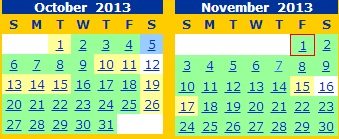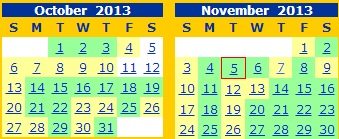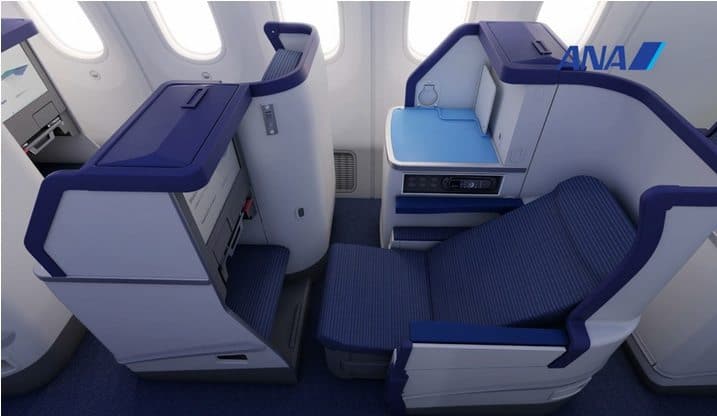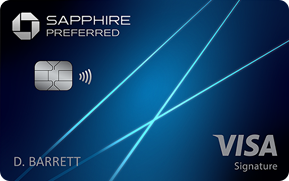MileValue is part of an affiliate sales network and receives compensation for sending traffic to partner sites, such as CreditCards.com. This compensation may impact how and where links appear on this site. This site does not include all financial companies or all available financial offers. Terms apply to American Express benefits and offers. Enrollment may be required for select American Express benefits and offers. Visit americanexpress.com to learn more.
Note: Some of the offers mentioned below may have changed or are no longer be available. You can view current offers here.
Part I: The Main Award & Finding a Free Oneway
Part II: Breakthrough: Maximizing the Routing in a Major Way
Part III: Adding a Great Sidetrip
As part of my New Year’s travel resolutions, I really wanted to visit Tokyo and see a close friend in Europe this year. My vacation time is extremely limited, so I was forced to maximize the award ticket. Luckily, my best times to take off are in October and November. The fall is typically off peak travel times in Europe and Asia, but the weather is still mild and it’s typically less crowded.
Most importantly, though, is that award space is usually ample during this time. As I began to construct my Tokyo trip, options just seemed to keep opening up. That’s a great problem to have!
Living in the Baltimore area, I have my pick of Baltimore-Washington, Washington-Reagan, and Washington-Dulles as a jumping off point. My strong preference is BWI or DCA, but when traveling internationally, IAD just makes more sense. There are more nonstops and more options overall.
I would be using Dividend Miles to book my trip without question. I had earned quite a few US Airways Dividend Miles through the now-defunct Grand Slam promotion, the extremely lucrative share miles deal in October, and the Barclay’s co-branded credit card signup bonus.
Having a large balance wasn’t the only incentive to use Dividend Miles. US Airways has a truly incredible partner award chart with some spectacular values. Flying business class to the North Asia region is only 90k miles on Star Alliance carriers. United will charge 120k miles for the same itinerary, so booking with US Airways saves us 30k. For more US Airways sweet spot awards, make sure to check out Scott’s posts here, here and here.
United.com is my favorite place to search for Star Alliance availability. For a great step by step, make sure to check out Scott’s post Free First Class Next Month: Star Alliance Award Searches on United.com. I knew that both United and All Nippon Airways (ANA) each operated a daily nonstop from Dulles <-> Tokyo-Narita. That would be the starting point for the award.
After tricking United.com’s Award Calendar, I was able to pull up nonstop availability for two travelers in October and November. There was business space to Tokyo nearly every day!
I then plugged in the reverse Tokyo -> Washington-Dulles route. Award space wasn’t as good but was still solid.
I could have written down the flight numbers and called US Airways directly at 1-800-662-1015 to book the award. I wouldn’t have been able to escape the $50 award processing fee nor the taxes associated with the ticket, but those are a small price to pay for a 90k business class award ticket to Tokyo.
I hesitated, though. The award just wasn’t good enough. I wanted to try out and review more than just ANA’s 777 product. I wanted to take a spin in their new 787 Dreamliner.
Knowing that the Dreamliner operated nonstops to Tokyo out of Seattle, I unchecked the “Nonstop Flights Only” box at the bottom of the screen and searched again from Washington-Dulles to Tokyo. There was business class award space on most days Monday-Friday in October and November. A sample itinerary is below.
When using US Airways miles, you want to find space on united.com with blue Select buttons–saver space. Ignore the prices in miles, since US Airways will charge you a different amount–usually fewer miles as in this case.
I would travel IAD-SEA-NRT with SEA-NRT in the brand new 787 Dreamliner. The return would be a convenient nonstop NRT-IAD. All legs would be in business. That’s a solid award ticket, but at MileValue we pride ourselves in maximizing our award bookings. It was time to add a free oneway to the ticket.
San Francisco in August seemed like an enticing proposition. The weather would be perfect, the Baltimore Orioles would be battling the San Francisco Giants, and I could finally catch a game at the acclaimed AT&T Park. This was the perfect chance to add a free oneway onto my existing award!
As Scott wrote in his post, Master Thread: Free Oneways on US Airways Awards, the free oneway MUST be before your main award TO your home airport. I did a check of SFO to either BWI or DCA. There was fortunately saver economy space for two itineraries that matched my schedule well. I opted for the top one.
Note that adding a saver award segment in economy doesn’t change the price of the entire award ticket. It will still price at 90k miles if even one segment is in business class. Luckily I didn’t care about flying business domestically. The international legs were in business, and that’s all that mattered to me.
My itinerary was close to being complete. It was as follows:
August 11th SFO-EWR-DCA (free oneway)
November 4th IAD-SEA-NRT
November 10th NRT-IAD
(Note that I am flying into DCA and out of IAD on the award. This is fine on awards with all airlines because the airports are considered coterminal. This is not an open jaw. What is an Open Jaw?)
I wasn’t done, though. The above itinerary would be quickly rejected by US Airways. The award begins in San Francisco and ends in Washington D.C. That’s an open jaw. There is also a stopover in Washington D.C. between August and November. With US Airways awards, you are permitted a stopover OR an open jaw. You can’t have both. It was time to turn this into a bookable award.
As Scott notes, within 24 hours of landing at your home airport (in this case, Washington D.C.), the award must continue from your home airport to where the award began (the free oneway origin). I won’t fly this final segment, but it’s important to add it to the award, so it satisfies US Airways’ routing rules. For another example of such an award, see his favorite award ever: Anatomy of an Award: South America, Africa, Europe, and North America in Biz for 100k.)
The NRT-IAD leg lands in Washington D.C. at approximately 9:40 a.m. in the morning on November 10th. I needed to find award space back to San Francisco before November 11th at 9:40 a.m. Luckily United runs frequent nonstops between Dulles <-> San Francisco. I picked an early morning departure that satisfied the 24 hour rule above. My itinerary was as follows:
San Francisco to Newark to Washington-Reagan (free oneway in economy)
Washington-Dulles to Seattle to Tokyo-Narita (business)
Tokyo-Narita to Washington-Dulles (business)
Washington-Dulles to San Francisco (not going to fly/throw away segment)
You have to call US Airways to book partner awards. They can’t be purchased online. I wrote down the details for each flight segment I wanted: dates, times, flight numbers, carriers, and cabins, and called US Airway at 1-800-622-1015.
To help put the agent at ease, I began the call with, “I’m going San Francisco to Tokyo roundtrip. I just got disconnected with another agent. She had priced out the award at 90k. Can I give you the segments?” I fed her the information and she put me on hold to verify the routing with the rate desk. After a five minute hold, she said the itinerary wasn’t bookable as presented because it backtracked from San Francisco.
At this point, arguing would be useless. I thanked her for her time and politely hung up. I then called back the next day and fed the agent the exact same routing. After a short hold with the rate desk, the itinerary was accepted! Why was the ticket legal the second time around? Scott probably put it best when he said:
“US Airways nominally has some routing rules. But computers don’t price US Airways awards; humans do. And humans do it by looking at the origin and destination cities and where they fall on the award chart.
That means if you keep your total number of segments low, you make their job easy by feeding them flights with space, and you’re friendly, you can get away with a lot.”
At this point, I could put the award on a three day courtesy hold or book it immediately. In this case, a courtesy hold would actually be unwise. If I called back in to book the award, the agent would again need to verify the itinerary with the rate desk. That just means it’s another chance for US Airways to reject it!
I was about to give the phone agent my credit card information when I paused AGAIN. This award had the potential to be even better. I wanted to try out more Star Alliance business class products. I wanted to see more places than just San Francisco and Tokyo. I could do even better. It was back to the award laboratory.
This offer has expired. Click here for the top current credit card sign up bonuses.
Earn 40,000 US Airways Miles on First Purchase through the US Airways Premier World MasterCard.
Recap
US Airways has a really great partner award chart. A business class ticket to North Asia is only 90k miles roundtrip. With a few caveats, you can also add a free oneway to the beginning of your itinerary, provided the city where your free oneway starts is in the same region of the US Airways award chart as your home airport. My free oneway could be from anywhere in the continental US, Canada, or Alaska.
US Airways does have some routing rules, but they are loosely enforced at best. With that piece of knowledge, I wanted to turn my award ticket into something even better.
If you want to squeeze the most value out of your frequent flyer miles and don’t have the time or energy to exploit the routing rules or search for award space, consider using our great Award Booking Service.
The next installment in this series will center around exploiting US Airway’s lax routing policies even more! Instead of just Tokyo, it will be time to tack on some additional international segments.
Just getting started in the world of points and miles? The Chase Sapphire Preferred is the best card for you to start with.
With a bonus of 60,000 points after $4,000 spend in the first 3 months, 5x points on travel booked through the Chase Travel Portal and 3x points on restaurants, streaming services, and online groceries (excluding Target, Walmart, and wholesale clubs), this card truly cannot be beat for getting started!
Editorial Disclaimer: The editorial content is not provided or commissioned by the credit card issuers. Opinions expressed here are the author’s alone, not those of the credit card issuers, and have not been reviewed, approved or otherwise endorsed by the credit card issuers.
The comments section below is not provided or commissioned by the bank advertiser. Responses have not been reviewed, approved, or otherwise endorsed by the bank advertiser. It is not the bank advertiser’s responsibility to ensure all questions are answered.










would you say Dividend miles are the best way to get between North America and Japan?
Yes, 90k miles roundtrip in business versus 120k with United, 100k on AA, and 120k on Delta.
Just don’t be drooling over Lufthansa first class for your segment between Asia and Europe, or SQ for that matter. That leaves ANA, since Thai business class is angled I heard.
Whats the best way to get to ICN from JFK?
From a miles standpoint? Using 90k US Airways miles for a roundtrip business award is the best in my opinion. For economy travel, American Airlines offers MileSAAver offpeak availability from October 1-April 30 for only 50k miles roundtrip.
I thought you were going to add a stop in Europe.
You’re correct. In the next post I discuss routing this award through Europe.
Excellent post! Can’t wait until the next one. We’re going to Asia this summer.
I’m confused, how are you able to do this? I thought a stop over has to be “on the way” so to speak. In this case you are zig zagging across the USA and back? Can you only do this with US Air awards?
Miz
Backtracking is definitely possible on United oneway awards as well. Check out Scott’s examples:
https://milevalu.wpengine.com/free-oneways-on-united-awards/
https://milevalu.wpengine.com/master-thread-free-oneways-on-united-awards/
American and Delta have much more stringent routing rules that would prevent this itinerary from being legal.
I’ve been considering a similar, but more complex, mini RTW routing. Something like stopover in Istanbul on the way east, then stopover in HNL on the return (or HKG? or ICN?). Because crazy routings is what US miles are all about, right?
Lisa, you read my mind! In the next post I talk about including a stop in Istanbul on the way to Tokyo.
So did you get the 100% bonus buy miles offer today? It’s apparently targeted to people who bought or shared miles last year. I didn’t buy miles in 2012, but did the October share and I still got the offer. I’m tempted, but the next 100% offer will probably be in March.
I got it because I did the share. I know Bill did the share too, so he probably got it.
So basically you get free one way coach ticket to SFO from DC…But how will you get to SFO? Guess you will still have to purchase a separate ticket from DC to SFO? Isn’t it sometimes more expensive to buy one way ticket than round one? How could this help you to save money?
Roundtrips on Virgin America DCA SFO were going for about $360 when I was contemplating booking this award. Oneways were exactly half the cost, so including the oneway in my award ticket did save me approximately $180 (minus the Elevate Points I would have otherwise earned for this trip).
If you start a chain of free one-ways you can stack them for the next few years and have the required 2nd one-way be taken care by a prior award. Would take some planning!
[…] Home › Award Booking › How to Book a Flight to Tokyo for 90,000 US Airways Dividend Miles […]
Why go to all th effort of adding a free one-way if you’re not going to take advantage of being able to fly it in Business Class? I understand that a 5hr flight is tolerable in Y, but unless you need a specific date you might as well hold out for J, even domestically.
I had to travel on 8/11, options were limited or nonexistent using other miles (AA, Delta, United), and I don’t mind traveling in economy domestically. As it turns out, I scrapped the oneway and turned this into a longer international itinerary. I’ll breakdown the full details in an upcoming post.
I clearly remembered Scott said you can add free oneway at beginning or at the end too. I want to set up my free oneway at the end from lax-hnl
What is your desired routing and are you trying to use US Airways miles?
On every type of award except one with US Airways miles. Different airlines. Different rules. Read the post about Free Oneways on US Airways awards for a full explanation on why they need to be at the beginning.
Let me get this straight: You’re reserving an award ticket, something that we all agree is scarce, from IAD-SFO that you KNOW YOU WILL NEVER USE? Screw you, man! Way to ruin it for everyone…
Actually he didn’t reserve it. But that’s the only way to get the award he wants, so he has to do it.
Really. It’s the only way? Dude could… You know… ONLY BOOK AWARD FLIGHTS THAT HE INTENDS TO USE! Aren’t you an attorney and member of the bar? And you’re comfortable advocating that people reserve award flights from a limited pool that they never intend to use? Some ethical standard, here. Personally I think it’s fraud but at the very least it’s a dick move.
No 787 for you!
I’m sure the kinks will be ironed out by November, but I’m glad I changed the award and didn’t go out of my way to chase the 787.
Hopefully the 787 will have ironed out thier teething problems by then. If not then it’s a 777 or A series flight for the ANA leg.
Can you tack on one ways to an offpeak award? If so, does all the travel have to be within the offpeak window? Thanks!
[…] Part I: The Main Award & Finding a Free Oneway […]
My question is, how do you plan on getting your checked luggage out in Washington-Dulles? If I want to take the same approach but have checked luggage, doesn’t it get checked all the way through to SFO?
If I had gone through with the trip, it would have been with carry-on bags only.
Also, if you book the IAD-SFO for the next morning, say 20 hours later, the bags will come out at baggage claim.
From what I have seen and read on other websites, seems like this is not automatic. I had a 23 hour layover in Singapore on the way to Frankfurt and the bags were checked through to Frankfurt. It may be the case that you can ask them to *not* do a through check, but don’t think it’s always the case, at least not without a double check with the airline.
[…] Part I: The Main Award & Finding a Free Oneway […]